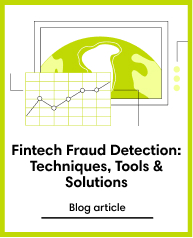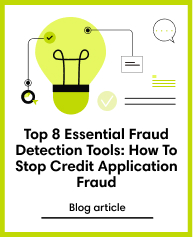Fraud
Mar 24, 2022
How fragments are useful for solving fraud and enhancing UX
Subscribe to our newsletter
Fragments are insights from smartphone and web metadata. These granular learnings of a person’s behaviour are obtained from the analysis of cellphone digital footprints processed across different data categories, including calendar events, videos, images, contacts, media, and stored files. Although this may seem intrusive, fragments fully respect people’s anonymity. The data is processed in a non-personal way, without any personally identifiable information, and most importantly, only if consented by the users. As such, fragments protect people's privacy while also delivering highly useful information capable of detecting fraud and improving the overall user experience.
Greater protection against fraud
Preventing fraud is essential in the financial industry as crimes are becoming more frequent, and it is easy to become a victim of one of them. For example, Mercado Libre, the most valuable fintech in Latam, with a price of 90 million USD, suffered an attack that caused data -from more than 300,000 accounts- to be leaked. That is why fragments can be a great alternative to avoid these types of scams.
Fragments have several advantages. On the one hand, they help prevent malicious subscriptions thanks to their ability to know the type of device (its brand, operating system and model) and detect anomalous behaviour (such as the use of autofill forms or the presence of bots). On the other hand, by keeping the identity of each user protected, they avoid the kind of cybercrimes that seek to steal customer information.
Additionally, fragments can help expose fraud by shedding light on other smartphone behaviours:
- Detect repeat loan signups using the same device, browser, or IP address
- Dig up how often applicants change their key information like address or income
- Discover if the phone is locked or open to a global network
- Predict the lifespan of the mobile device and check how active its owner is, based on the volume of media created and/or contacts saved over time.
In short, fragments are ideal to ensure a healthy onboarding process, securing an effective user verification while detecting possible fraudulent behaviours.
An Improved User Experience
Designing for digital natives is not the same as designing for people who have little contact with the online world. That's why fragments are ideal for businesses willing to learn more about their tech-savvy clients. Knowing the client's digital skills makes the difference between a rewarding experience and one that causes frustration to users.
In addition, if we consider marketing not as a generator of needs but as the discipline responsible for finding and satisfying them, fragments become essential in discovering more granular consumer behaviours and lifestyles. This also helps create better segmentation and build more appropriate customer journeys that delight experiences.
Fragments also allow companies to obtain information in real-time. With data obtained in the moment, UX managers have the tools to make more accurate and faster decisions compared to any traditional market research. For example, it is possible to detect actions that indicate consumer doubt, dropout, or even data manipulation in a subscription process.
Thanks to mobile data access and artificial intelligence, companies can have a better understanding of their customers and provide more effective protection to their identities. In this way, fragments become a great solution for the financial industry, solving a wide variety of questions that arise across sales, marketing, UX, UI and cybersecurity departments.





